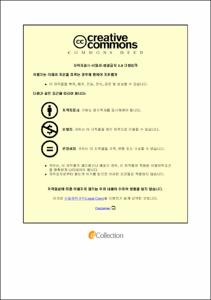2018년~2021년 제주 양식 넙치(Paralichthys olivaceus)의 주요 병원체 (Streptococcus parauberis, Edwardsiella piscicida, Scuticociliate) 동향 분석
- Alternative Title
- Occurance analysis of major pathogens (Streptococcus parauberis, Edwardsiella piscicida, Scuticociliate) cultured olive flounder (Paralichthys olivaceus) from 2018 to 2021 in Jeju
- Abstract
- Streptococcus parauberis, Edwardsiella piscicida, and scuticociliate are major pathogen diseases in associated with high economic losses in aquaculture. This study were determined whether occurrence of these three major pathogens infections in olive flounder (Paralichthys olivaceus) correspond with changes in water temperature on fish farms in Jeju island. During 2018 to 2021, investigated the different culturing water temperature conditions by region of fish farms that divided in to 4 locations. The average annual water temperature for each region in 2018 was 18.28°C in Daejung, 18.46°C in Namwon, 17.83°C in Sungsan, and 17.57°C in Gujwa. In 2019, it was 18.78°C in Daejung, 18.65°C in Namwon, 18.2°C in Sungsan, and 17.63°C in Gujwa. In 2020, it was 18.1°C in Daejung, 18.1°C in Namwon, 17.8°C in Sungsan, and 17.4°C in Gujwa. In 2021, it was 18.9°C in Daejung, 18.2°C in Namwon, 18.2°C in Sungsan, and 17.7°C in Gujwa. The result of Pearson’s correlation analysis showed culturing water temperature and pathogen detection rate have no significant but confirmed Daejung and Gujwa have big difference in culturing water temperature fluctuation and this caused pathogen detection
rate difference specially with E. piscicida. In conclusion, the results of S. parauberis detection rate have no significant correlation with culturing water temperature and growth period of olive flounder size. E. piscicida, detection rate have significant correlation with culturing water temperature and scuticociliate detection rate have significant correlation with growth period of olive flounder size. Additionally, even if the fish farms use similar culturing water temperature, occurrence of pathogenic diseases will occur different by various causes. In the other hand, this result showed that necessity of customized hazard disease control program for each fish farm.
- Issued Date
- 2023
- Awarded Date
- 2023-08
- Type
- Dissertation
- Alternative Author(s)
- Yoo, Juri
- Affiliation
- 제주대학교 산업대학원
- Department
- 산업대학원 해양생물공학과
- Advisor
- 정준범
- Table Of Contents
- I. 서론 1
II. 재료 및 방법 5
1. 넙치 샘플 수집방법 5
1-1. 제주지역의 구분 5
1-2. 넙치 선별과 수온 7
1-3. 넙치 체장과 체중 7
2. 넙치 병원체 검출과 상관관계 분석 9
2-1. 병어 넙치의 증상 9
2-2. 병원체 검출 9
2-3. 사육 수온과 병원체 검출 상관관계 분석 14
III. 결과 15
1. 병원체 검출률과 사육수온 15
2. 수온과 검출의 상관관계(p-value: >0.05, correlation value close to 1 or -1) 20
2-1. 2018년 사육수온과 지역별 S. parauberis, E. piscicida, Scuticociliate 검출의 상관관계 20
2-2. 2019년 사육수온과 지역별 S. parauberis, E. piscicida, Scuticociliate 검출의 상관관계 26
2-3. 2020년 사육수온과 지역별 S. parauberis, E. piscicida, Scuticociliate 검출의 상관관계 32
2-4. 2021년 사육수온과 지역별 S. parauberis, E. piscicida, Scuticociliate 검출의 상관관계 38
3. 지역별 수온과 검출률 비교 44
3-1. 대정지역 44
3-2. 남원지역 47
3-3. 성산지역 50
3-4. 구좌지역 53
3-5. 지역별 양식장 수온과 검출률 비교 56
3-6. 양식장별 병원체 검출률 65
4. 넙치 성장시기별 병원체 검출률 70
5. 넙치 성장시기에 따른 병원체 검출률과 복합감염 검출률 비교 72
IV. 토의 및 결론 74
V. 참고문헌 78
VII. 감사의 글 84
- Degree
- Master
- Publisher
- 제주대학교 산업대학원
- Citation
- 유주리. (2023). 2018년~2021년 제주 양식 넙치(Paralichthys olivaceus)의 주요 병원체 (Streptococcus parauberis, Edwardsiella piscicida, Scuticociliate) 동향 분석.
- Appears in Collections:
- Graduate School of Industry > Marine Organism Engineering
- 파일 목록
-
-
Download
 2018년~2021년 제주 양식 넙치(Paralichthys olivaceus)의 주요 병원체 (Streptococcus parauberis, Edwardsiella piscici.pdf
기타 데이터 / 8.69 MB / Adobe PDF
2018년~2021년 제주 양식 넙치(Paralichthys olivaceus)의 주요 병원체 (Streptococcus parauberis, Edwardsiella piscici.pdf
기타 데이터 / 8.69 MB / Adobe PDF
-
Items in Repository are protected by copyright, with all rights reserved, unless otherwise indicated.